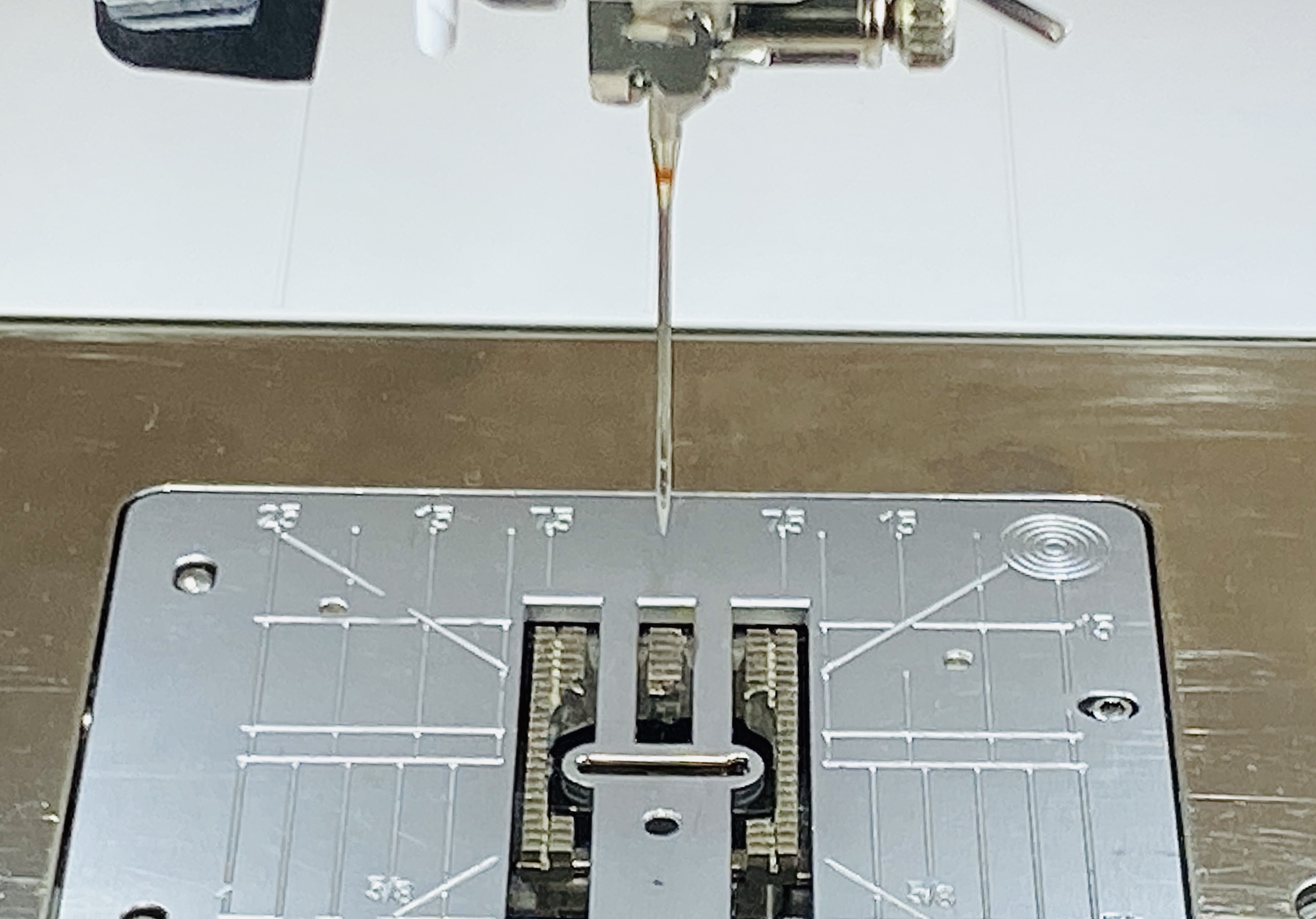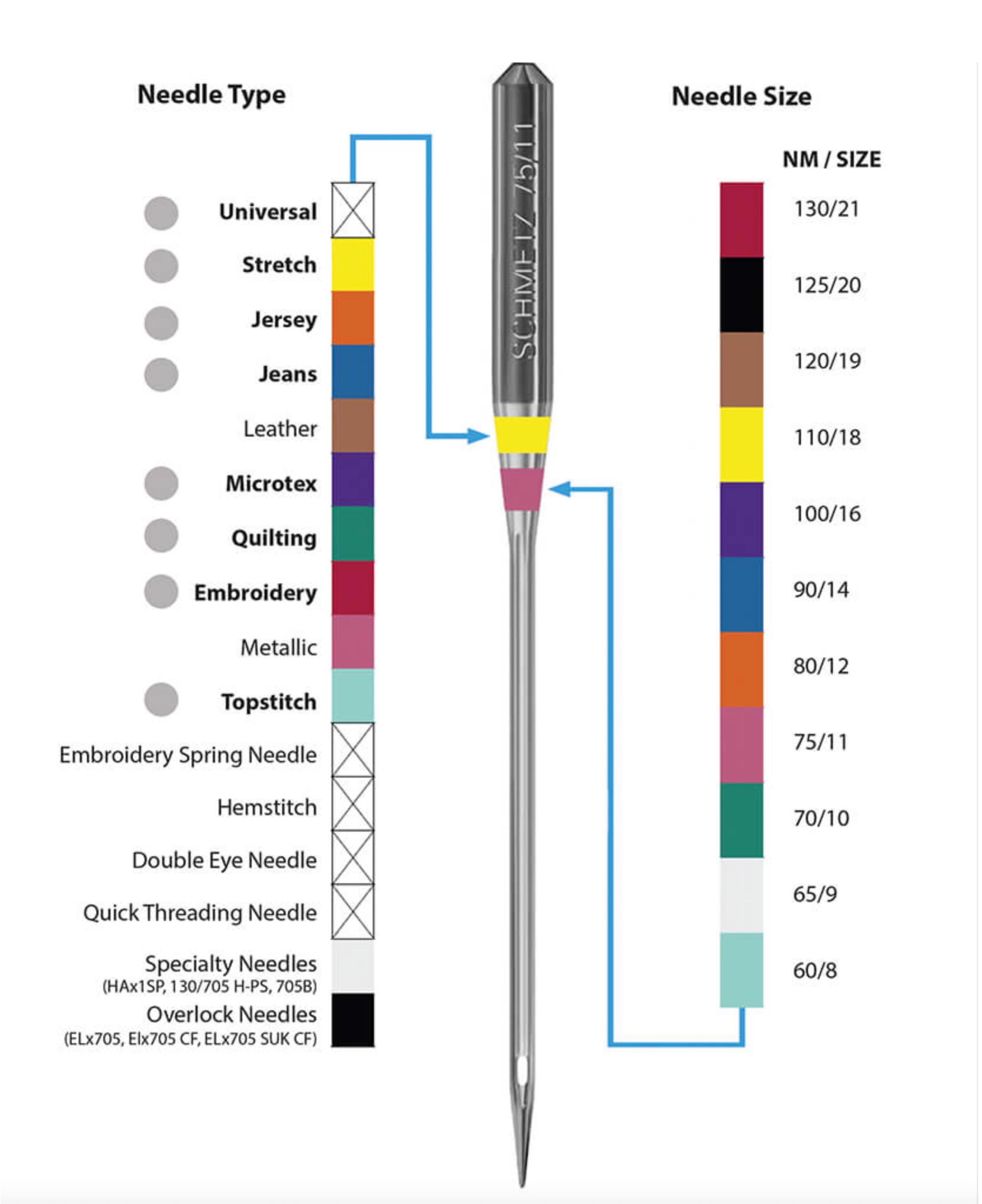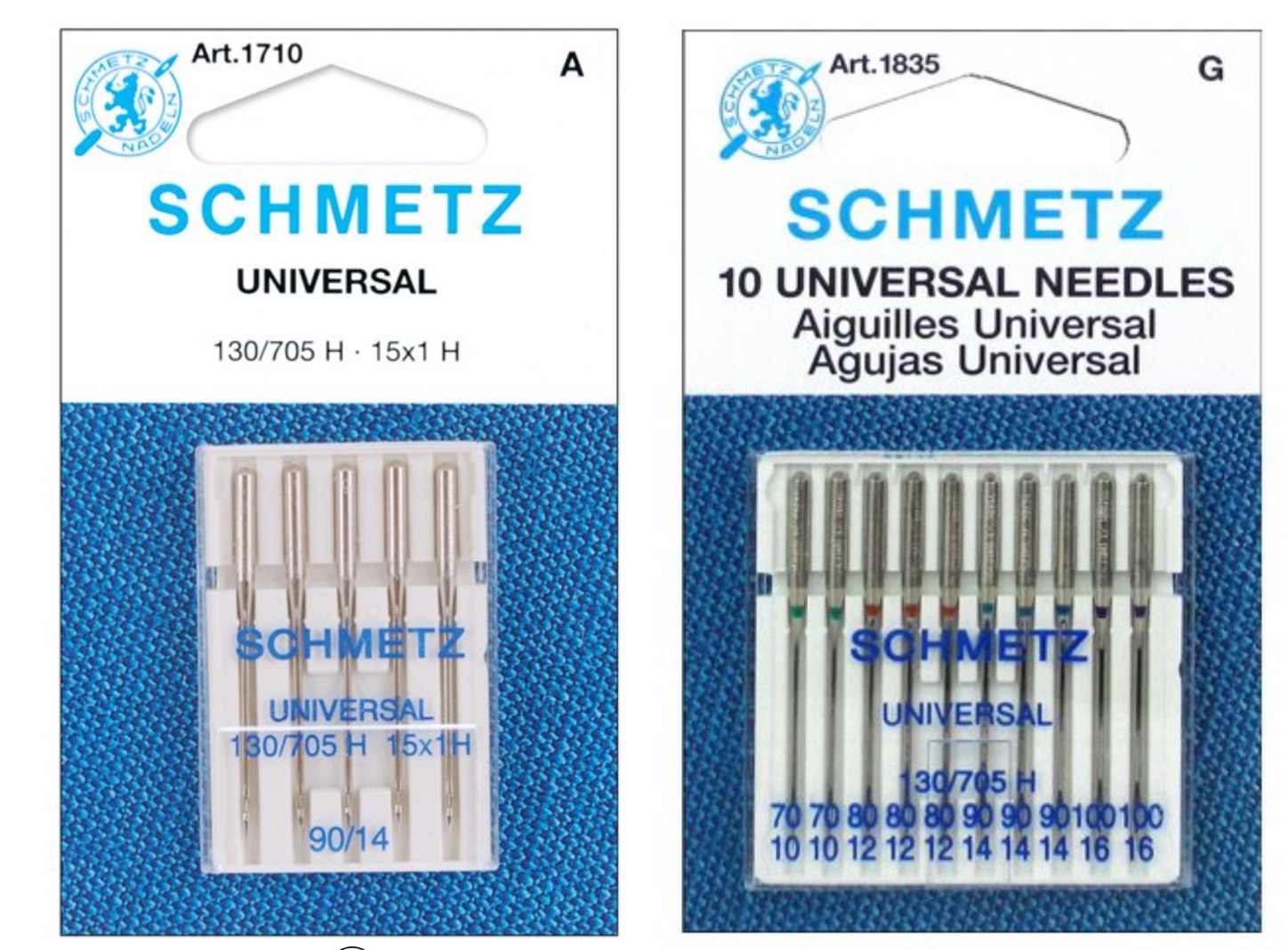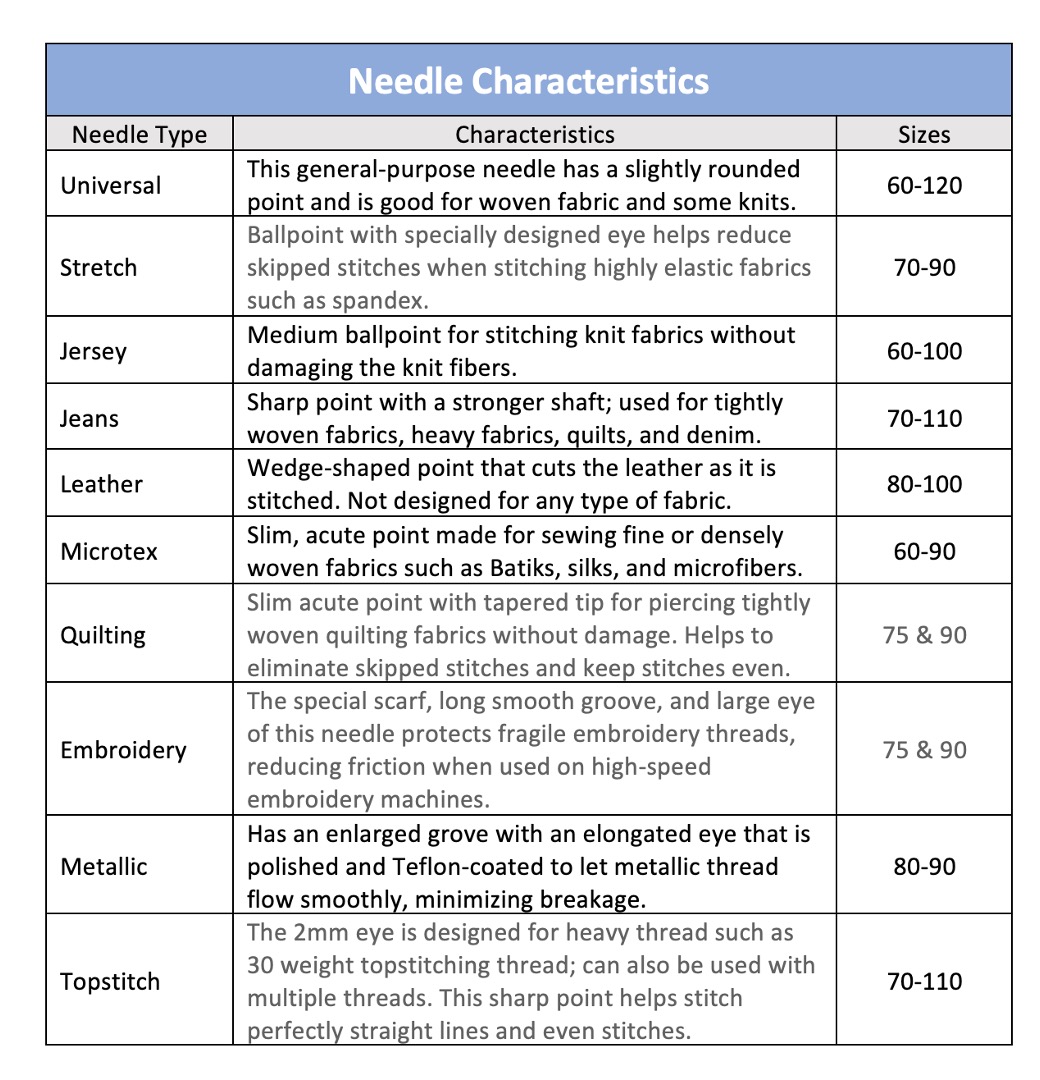How much do you know about sewing machine needles? Every sewing machine requires a needle to carry the thread through the fabric. It is one of the most important parts of the machine, even though it is one of the most inexpensive parts. From the invention of the sewing machine until now, the needle has been reworked, redesigned, and improved to give you the best stitching results possible. You might think a needle is a needle but there are many different types of needles, and several things you need to know about them.

Needle System
All needles are not the same. Using the appropriate needle means that the needle thread is carried into the bobbin area to connect with the bobbin thread, locking together to make a stitch. Most sewing machines use a needle system of 130/705 H. If you are unsure about the best needles for your machine, check the owner’s manual, or ask your sewing machine dealer. Schmetz needles work with all domestic sewing machines. The diagram below shows the Schmetz color coding that lets you see the type and size of the needle at-a-glance.
Needle Size
Needles sizes are marked on the package with two numbers, such as 80/12. Eighty is the European size and twelve is the American size. In both cases, the higher the number, the larger the needle and the smaller the number, the smaller the needle. Small needle points are for lightweight fabrics and larger ones are for heavier materials. It is also important for the thread is compatible with the needle size. The thread fits in the the groove on the front of the needle, cradling it as the needle goes up and down to form a stitch. Needles come in packages containing one size or assorted sizes. 
Needle Point
Something that distinguishes one needle from another, is the point. It is rounded, sharp, or tapered. The shape of the point relates to the fabric you are sewing. Rounded points such as ballpoint and stretch are for used for knit fabrics, from tricot to spandex. Use sharp points for tightly woven fabrics such as satin and batiks, while quilting needles have a tapered point that is great for seaming and cross-seaming when piecing patchwork.
 Needle Types
Needle Types
The chart below shows the characteristics of the most common sewing machine needle types used for a variety of fabrics and sewing situations.
#1 Needle Tip
I’ll end this post with the best needle tip I know. If you have any problem with stitching, including no stitch formation, skipped stitching, loops, distorted stitches, etc., the first thing to do is to change to a new needle. This takes care of the issue 80-90% of the time because all of those things can be caused by a blunt, burred, or bent needle. So pay attention to your needle and change it often – Happy Stitching!

